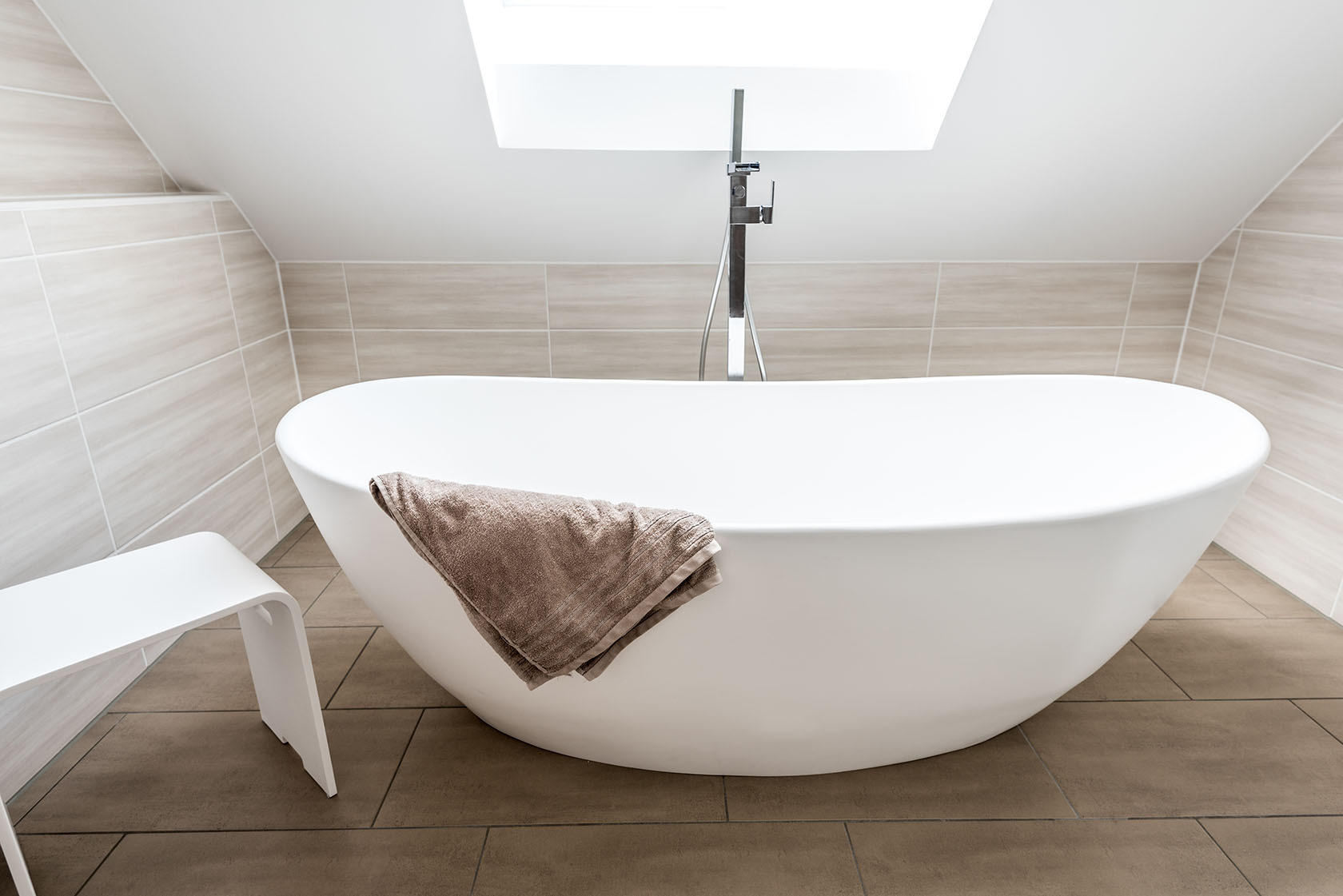
When designing a bathroom, it is worth paying close attention to purchasing the right bath. Just a few minutes in the bath can relax our muscles and positively influence our well-being. In shops, you can find a wide range of various types of baths, but those made of acrylic are the most popular.
Acrylic Bath - Daily Comfort
In the past, almost every bathroom was dominated by cast iron or steel baths. Fortunately, they have been replaced by their acrylic successors, which have much better characteristics. Firstly, it's worth knowing that acrylic baths are much lighter than their steel counterparts. They are also very pleasant to the touch - warm and smooth as soon as you get in. However, these are not the only advantages of acrylic baths. Speaking of this type of bath, we must mention the ease of maintenance. This material is highly resistant to discolouration and stains resulting from limescale or rust.
Acrylic is extremely hygienic and has antibacterial properties. This is thanks to silver ions, which effectively inhibit the growth of various types of bacteria. This is a huge advantage over enamelled products, where dirt often settles not only on the surface of the bath but also deeper in its structure. Removing it is often very difficult, and to get rid of impurities, stronger agents must be used, which can damage the bathtub coating. It should also be remembered that a bathtub is a product purchased for many years, which is why it is worth choosing one made of acrylic, not an acrylic-coated one.
Acrylic Bath vs. Acrylic-coated
When deciding to purchase a bath, it is worth getting familiar with what the market offers. This refers not only to aesthetic aspects but also to the use of modern technologies and solutions. The difference between an acrylic-coated and an acrylic bath is not only in the name. Acrylic baths are made entirely from acrylic, which means a solid sheet of acrylic, ensuring high quality. Acrylic-coated baths, also known as ABS sheet baths, are made from a sheet covered with a layer of acrylic, which thickness does not exceed 0.5 millimetres. This means that acrylic-coated baths are not as durable as acrylic ones, and they can quickly become damaged and easily scratched.
How to Maintain an Acrylic Bath?
Like any item, an acrylic bath requires proper care. It is smooth, so keeping it clean should not be too difficult. However, it is important to remember that acrylic does not like abrasive sponges and agents containing acetone, ammonia, and alcohol. These can result in the bath's surface becoming dull, making it easier for limescale and dirt to settle. There are many agents on the market today that effectively remove dirt, and it is worth using them from time to time. The simplest way, however, is to clean the bath with warm water mixed with liquid soap or dishwashing liquid. If the water is hard, it is worth wiping the bath dry with a soft cloth. Occasionally, it is also recommended to wash it with water with a bit of vinegar. These simple methods will ensure that the acrylic bath will serve reliably for a long time, looking clean and aesthetic.
It is also worth knowing that acrylic is a highly malleable material, which means it can be shaped as desired. Thanks to this, baths can be purchased specially designed to provide comfortable support for the back. Products with comfortable seats, headrests, or armrests can also be chosen. Regardless of which bath you choose, it is important to remember that its selection should match the overall bathroom design. This room should be comfortable and as functional as possible, so each element should be in the right place. The wide selection of acrylic baths opens up a wide range of concepts ideal for adapting to an apartment or house.


















